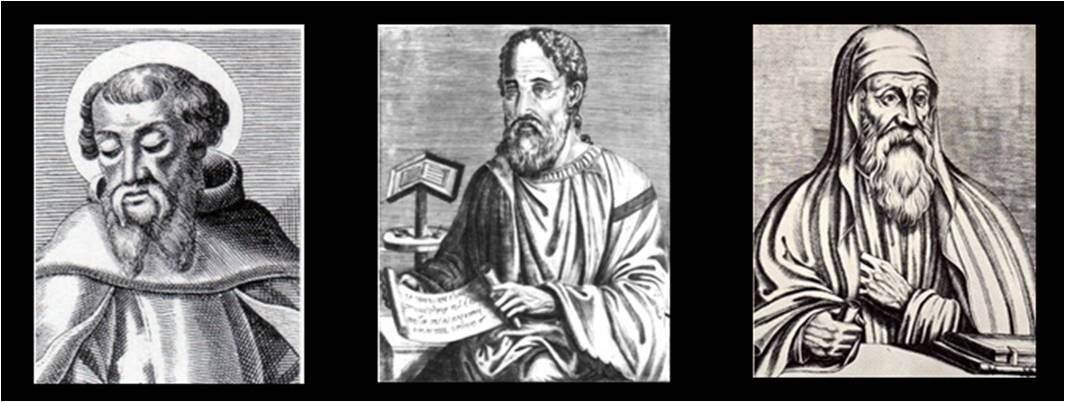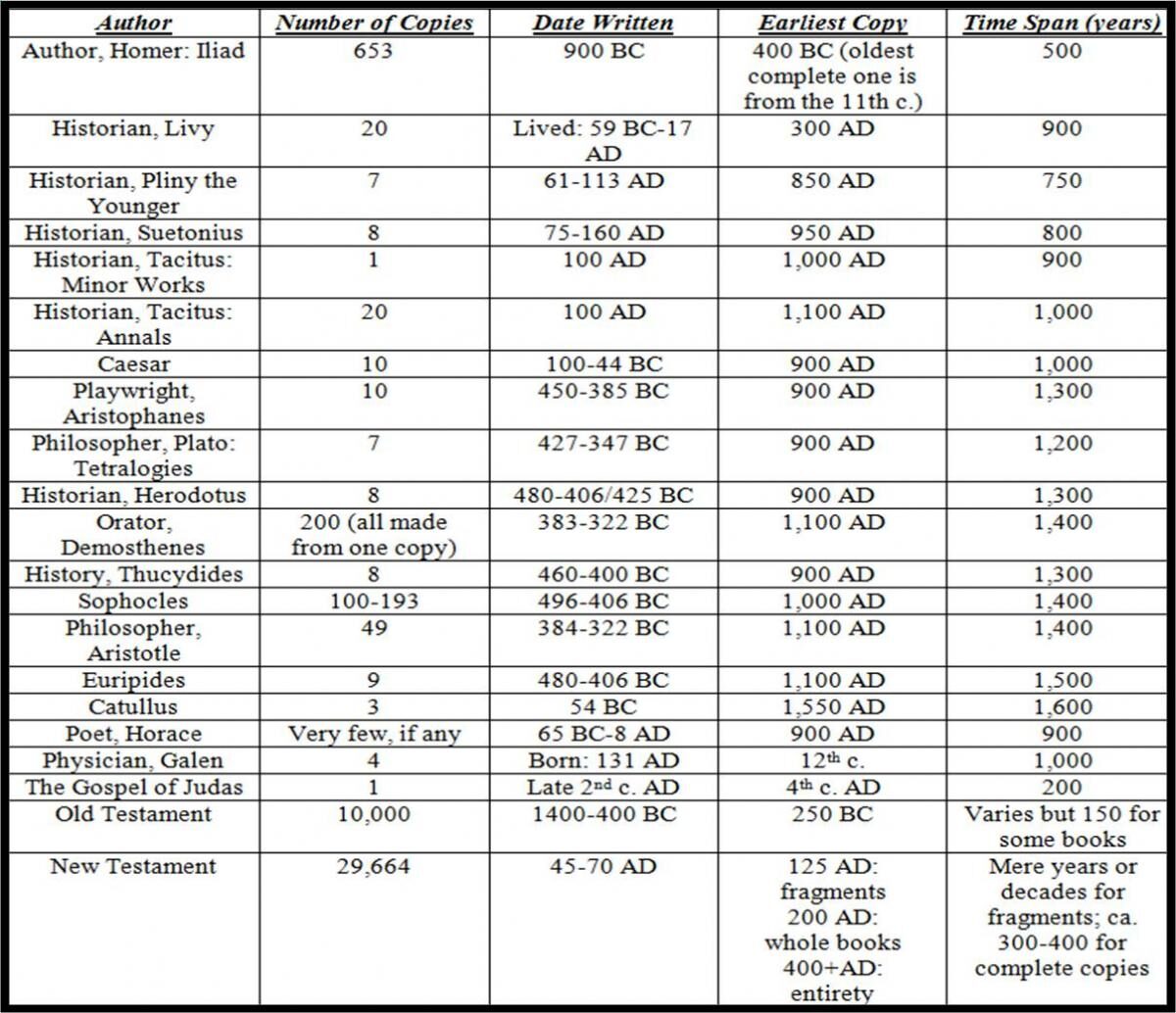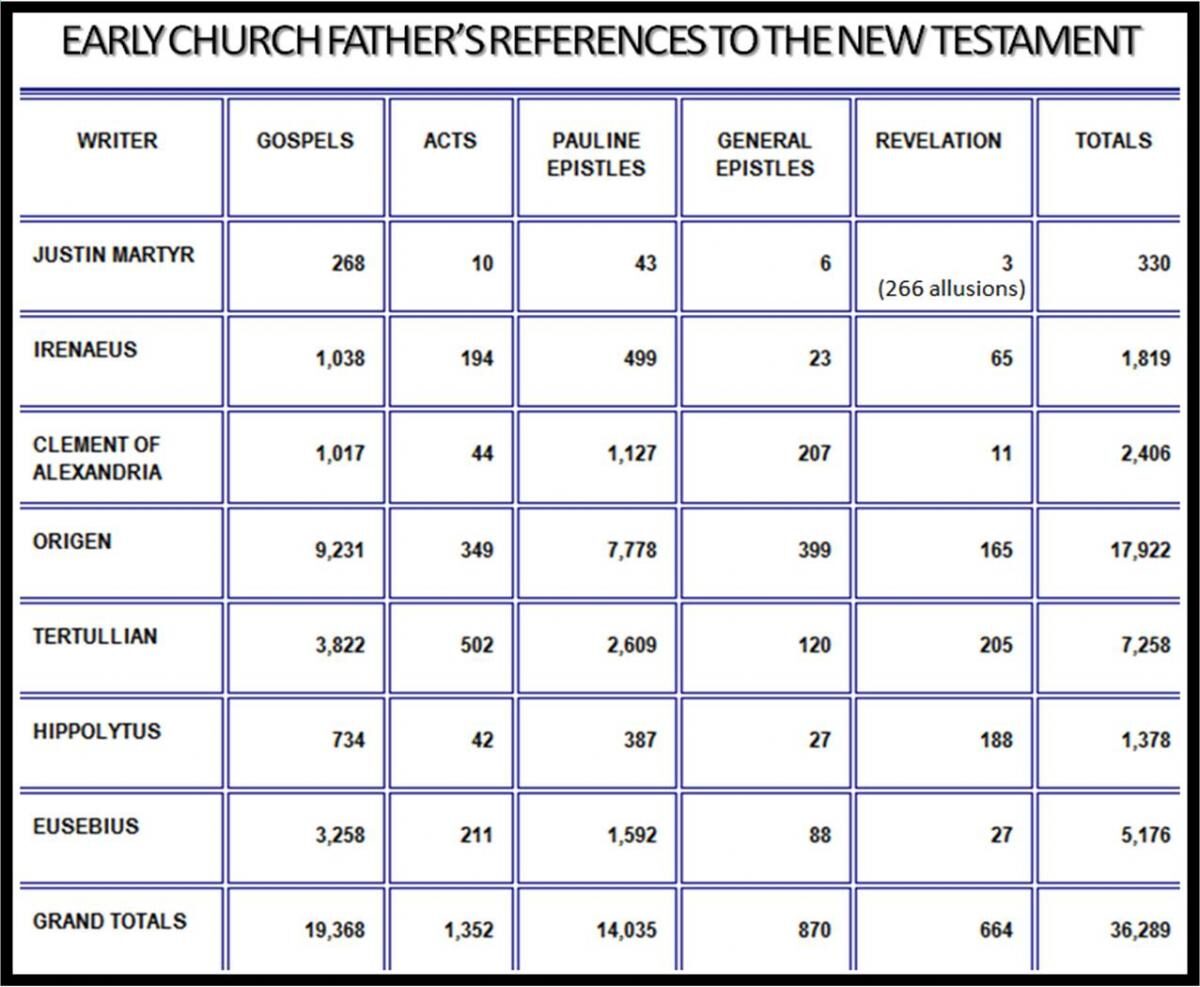We now continue consider the dating of the New Testament.
Note that Irenaeus (120-202 AD) wrote the following in Against Heresies III.11.7,
So firm is the ground upon which these Gospels rest, that the very heretics themselves bear witness to them, and, starting from these (documents) each one of them endeavors to establish his own particular doctrine.
Irenaeus also declared the following of Matthew, Mark, Luke and John in Against Heresies III.11.8,
It is not possible that the Gospels be either more or fewer than they are. For since there are four zones of the world in which we live, and four principal winds, while the Church is scattered throughout the world, and the pillar and ground of the Church is the Gospel and the Spirit of life; it is fitting that we should have four pillars, breathing out immortality on every side and vivifying our flesh. . . The living creatures are quadriform, and the Gospel is quadriform, as is also the course followed by the Lord.
Thus, we find early attestation of the acceptance of only the four gospels that we know today.
The Muratorian Fragment (170-200 AD) is, as its name implies, fragmentary and due to a missing beginning reads that, “The third book of the Gospel is that according to Luke…The fourth of the Gospels is that of John” thus, implying that there were only two others which were listed prior to Luke and John—the historical implication is that Matthew and Mark were listed as first and second.
We also find that in 206 AD Tertullian accepted only the four gospels and that in 254 AD Origen (found in Eusebius’ Ecclesiastical History, vi. 25) held that:
Among the four Gospels, which are the only indisputable ones in the Church of God under heaven, I have learned by tradition that the first written was that according to Matthew…Secondly, that according to Mark……thirdly, that according to Luke…After them all, that according to John.
I have written an entire essay on the issue of when the various New Testament books were considered canonical, see Canonization Controversy wherein, after considering the following:
The Muratorian Fragment: 170-200 AD, Clement of Rome: 96 AD, Ignatius of Antioch: 117 AD, the Epistle of Barnabas: 130 AD, Justin Martyr: 150 AD, Polycarp: 155 AD, Tatian: 160-175 AD, Irenaeus: 130-202 AD, the Gospel of Truth: 140 AD, Hippolytus: 170-235 AD, Tertullian: 160-220 AD, Origen: 185-250 AD, Clement of Alexandria: 180-211 AD, Cyprian of Carthage: 246 AD, Eusebius: 260-340 AD, Athanasius of Alexandria: 296-373 AD, Roman Emperor, Diocletian: 303 AD, the Synods at Rome: 382 AD – at Hippo: 393 AD – and Carthage: 397 AD and Jerome: 394 AD
I conclude that at least in 182 AD the texts that were accepted as apostolic and scripture were (at the very least) the gospels (Matthew, Mark, Luke and John), Luke’s book of Acts, Paul’s thirteen letters, 1st Peter and 1st John. There were some doubts about Hebrews, although some accepted it as one of Paul’s letters. James was accepted in the Eastern Church before the West. 2nd Peter was an uncertainty for some time. 2nd and 3rd John may have been attached to 1st John and simply known as John’s epistle (since 2nd and 3rd John are very brief texts). Jude was accepted in the Muratorian Fragment, Clement, Tertullian and Origen but not generally accepted for some time. Finally, Revelation also found some acceptance and some doubts for some time.
All 27 New Testament books were written, circulated, utilized and highly regarded even while very few of them were in dispute.
As time marches on the evidence for the Bible’s reliability only gains ground:
Two parts of an ancient biblical manuscript separated across centuries and continents were reunited… The 1,300-year-old fragments, which are among only a handful of Hebrew biblical manuscripts known to have survived the era in which they were written, existed separately and with their relationship unknown… Together, they make up the text of the Song of the Sea [“the song, known as the Ashkar manuscript”], sung by jubilant Israelites after fleeing slavery in Egypt and witnessing the destruction of the pharaoh’s armies in the Red Sea… [a] new exhibit chronicles how the Song of the Sea was written through various ancient manuscripts, from the 2,000-year-old Dead Sea Scrolls to the manuscript known as the Aleppo Codex, written nearly a millennium later…
The manuscripts are “filling the gap,” said Israel Museum curator Adolfo Roitman. “We can see we are dealing with a tradition that is still alive.”…1
…a previously unseen section of the Codex Sinaiticus, which dates from about AD350… A Greek student conservator who is studying for his PhD in Britain, Mr [Nikolas] Sarris had been involved in the British Library’s project to digitise the Codex and quickly recognised the distinct Greek lettering when he saw it poking through a section of the book binding…
The fragment is believed to be the beginning of Joshua, Chapter 1, Verse 10, in which Joshua admonishes the children of Israel as they enter the promised land.2
Early Church Leaders:

Now, let us cut to the chase; as seen above there are circa 29,664 manuscripts of the New Testament in 16 languages. Imagine if this overwhelming amount of evidence were to be destroyed. If all of the manuscripts were destroyed we could take the writings of the early church leaders—their books, commentaries, sermons and correspondence—in which they quote from the New Testament and we could reconstruct the New Testament with the exception of 11 verses. This handful of verses does not affect any major doctrine.

The writings of the early church leaders dated from within 250-300 years of the New Testament (which is one fifth less than almost all secular literature). We have 36,289 quotations of the New Testament from the early church leaders—some are 2 or 3 chapters long.
Here is a chart noting the church leader, the New Testaments book and how many times they quoted it:

~~~~~~~~~~~~~~~~~~~~~~~~
A plea: I have to pay for server usage and have made all content on this website free and always will. I support my family on one income and do research, writing, videos, etc. as a hobby. If you can even spare $1.00 as a donation, please do so: it may not seem like much but if each person reading this would do so, even every now and then, it would add up and really, really help. Here is my donate/paypal page.
Due to robo-spaming, I had to close the comment sections. However, you can comment on my Facebook page and/or on my Google+ page. You can also use the “Share / Save” button below this post.
